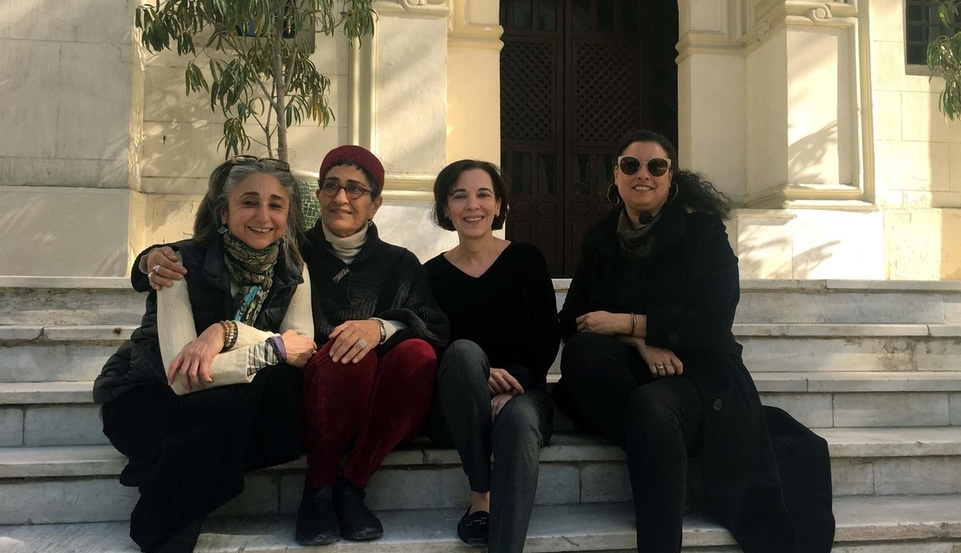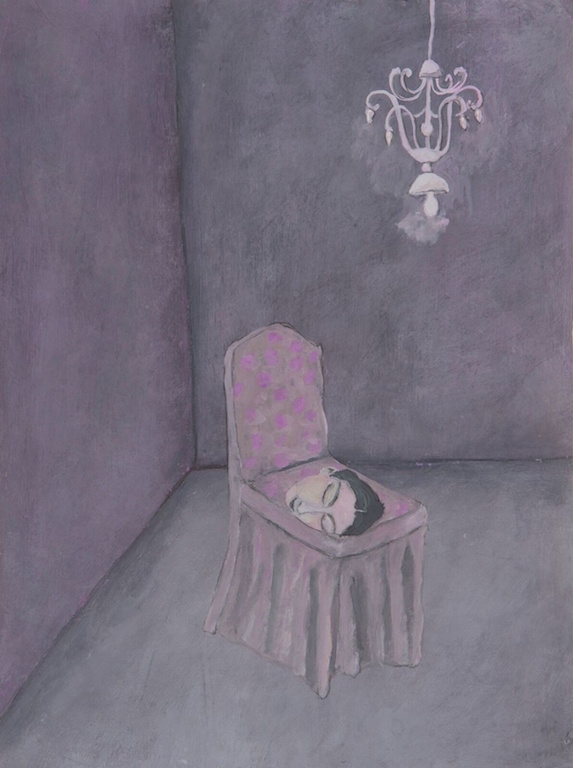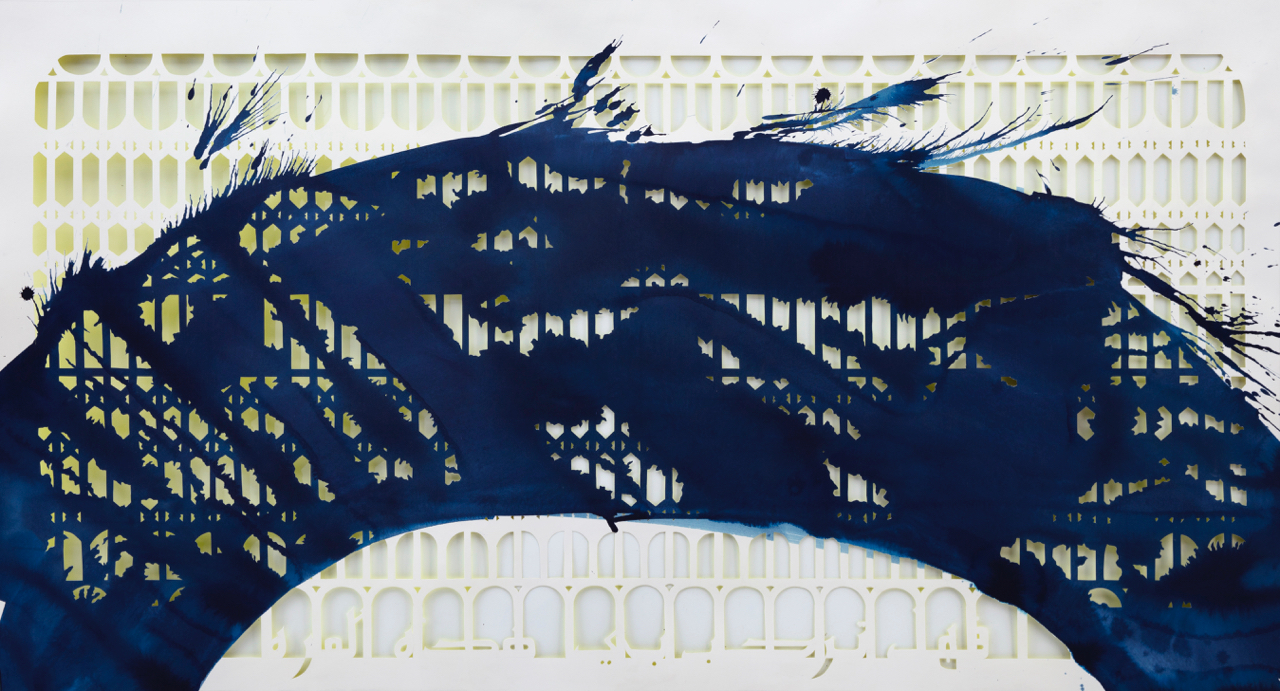Manifesting the unseen

As President Sisi moves to further consolidate his power with constitutional amendments allowing him to extend his term in office until 2034, the opening of these new galleries adjacent to Tahrir Square – ostensibly to commemorate the American University of Cairoʹs centenary – also raises questions about activism and marginalisation in Egyptian public and artistic life.
"My art has become a way of both articulating the unsayable and manifesting the unseen," Lufti said. Huda Lufti’s exhibition – "When Dreams Call for Silence" – documents in painting, mixed and multimedia pieces the shifting relationship between public and private concerns as a curtain is drawn over what the 71-year-old artist calls ʹthe euphoric historical momentʹ of the January 2011 uprising that unfolded eight years ago just a stoneʹs throw from the gallery.
"I have been grappling with the silence; trying to make work that explores that space in our lives," said Lufti. Her recourse to almost empty interior landscapes reflects the enforced withdrawal of artists from Egypt’s public arena.
"I consider this work a very political – even if the subjects are interior, my inspiration is the interwar surrealist movement in Europe which was in response to the horror of war," adds Lutfi, who back in 2011 embraced the public creativity of subversive graffiti, rhyming slogans and spontaneous installations constructed in Tahrir Square. "It’s not about denial, but about protecting oneself," says the artist, as she points to a mixed media painting called "Resting".
Between materiality and meditation
In lavender, grey, and black tones, "Resting" like the bulk of the other pieces in the exhibit, alternates between materiality and meditation, in a room that is simultaneously "local" and "everywhere" with the focal subjects – a high backed boudoir chair and a frilly, yet spartan single bulb chandelier immediately recognisable to Egyptian viewers as standard Cairene furnishings.

A paper cut out of a woman’s face lies on the cushion with the artist asking us to consider the absence or presence of the resting woman in her dreamlike domestic setting.
By contrast, "Crows" is one of the few paintings in Luftiʹs current exhibition clearly set outdoors – in this case an Islamic cemetery – where two sets of army boots and three black birds sit in the foreground of a memorial marker. The piece poses questions about presence and power against the backdrop of the finality of death.
Itʹs a softer, subtler riff on Lufti’s "Bidayaat" (soldiersʹ boots), her first video art piece made in 2012.
That piece of digital animation which shows troops marching in unison set to a techno track alluded to contrasting compassion for the poor, often peasant, late teens conscripted into Egypt’s armed forces and concern about what this mass of military might can do to civil society.
Lufti’s academic background is in cultural studies, which she taught at AUC for twenty-five years: indeed, an awareness of the procession of history imbues her work both literally and figuratively.
Like "Bidayaat", Lufti’s new animation showing at the Tahrir gallery which shares the title piece of the show "When Dreams Call for Silence" portrays a procession. In this case we see barefoot robed men marching to the music of Vivaldi’s Filiae maestae Jerusalem (ʹmourning girls of Jerusalemʹ), but in contrast, there’s a touch of optimism in a vision of men waking with a peaceful mindful purpose.
Fantasy and feminism
Marches and protests are also a theme in the work of Sherin Guirgus, a 45-year-old Luxor-born, Los Angeles-based artist who like Lufti has simultaneously pursued an academic and artistic career.
An associate professor of the practice of fine art and the vice dean of faculty at the University of Southern California, Guirgus combines deep research into her artistic subject and an exacting approach to its rendition as graphic design with skills such as paper cutting, stencil-making and stitching.
In "Bint al-Nil" (ʹdaughter of the Nileʹ) Guirgus renders the biographical details and writing of the formative Egyptian feminist Doria Shafik in a series of hand cut paper, ink and acrylic paint works.
"As an abstract painter, I had to think about how I approach making a work about an historical person," Guirgus explained.

In February 1951 Shafik organised a feminist congress on the AUC campus which proceeded to march to the gates of the nearby Egyptian parliament building demanding that women be granted the right to vote and hold public office.
"I was thinking about was how to have a discourse in the United States about the way that the history of feminism is documented as an entirely Western construct," said Guirgus who told us that she never imagined having the opportunity to exhibit her work in Egypt.
Site-specific architectural details such as the wrought iron fencing of parliament where Doria Shafik’s women’s march demanded equal rights and the gates of Azbakeya Gardens where she first spoke in public at the invitation of Egypt’s premiere feminist, Hoda Shaarawy, run up against the force of nature, represented in Guirgus’ work as the blue ink waters of the Nile.
"These works portray a search for a sense of place, a gendered reading of lost histories and an evocative declaration of the ways in which the past continues to shape the present," said Shiva Balaghi, senior advisor to the president and AUC provost for arts and cultural programmes.
It remains to be seen what impact art exhibitions and activities hosted by the Tahrir Cultural Center will have on the public sphere in Egypt in the future. "It has to be tested," said Lufti. "We have to wait and see to what extent the university is committed to making this a hub for arts and culture."
Mahmoud Saber
© Qantara.de 2019